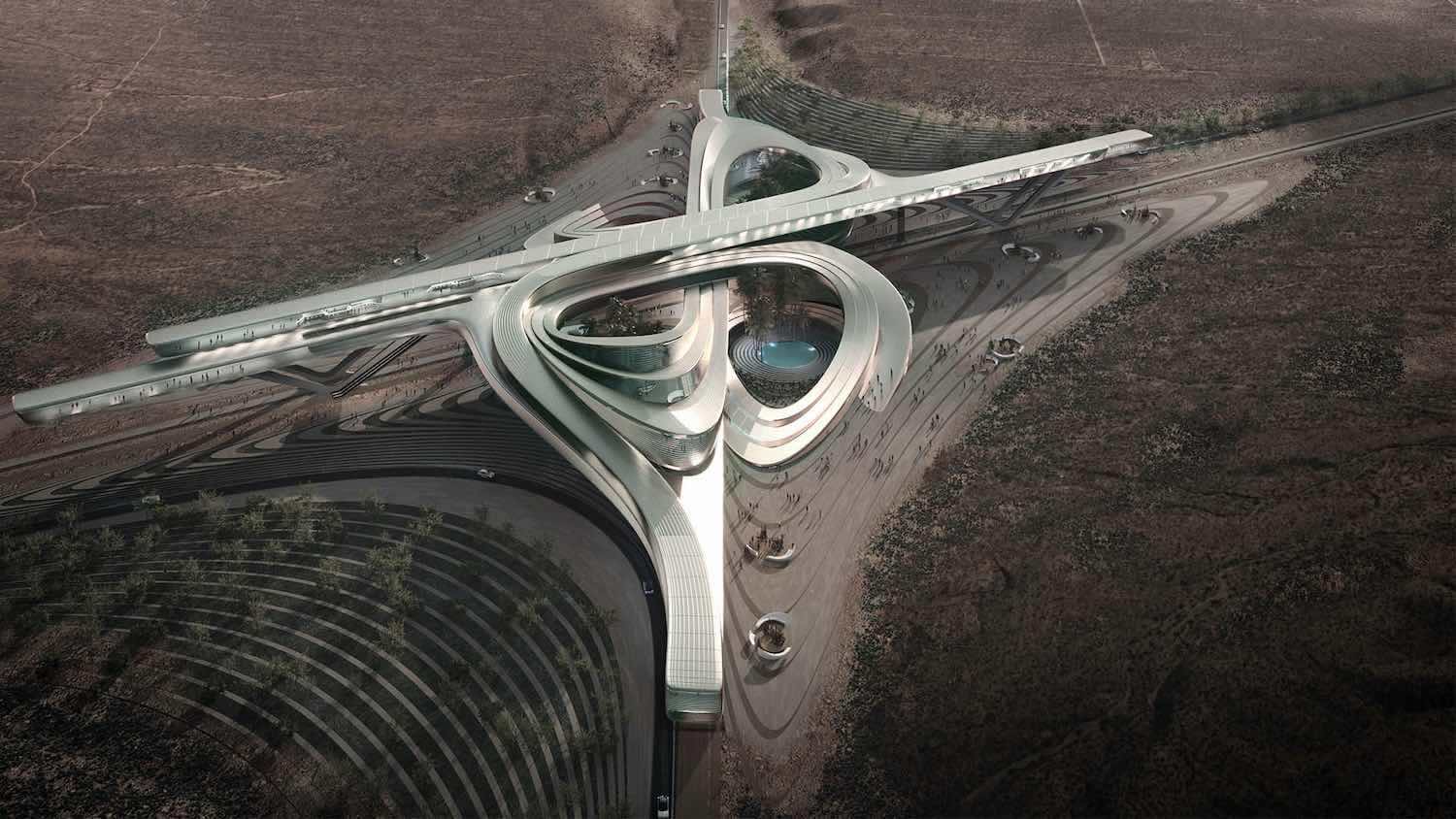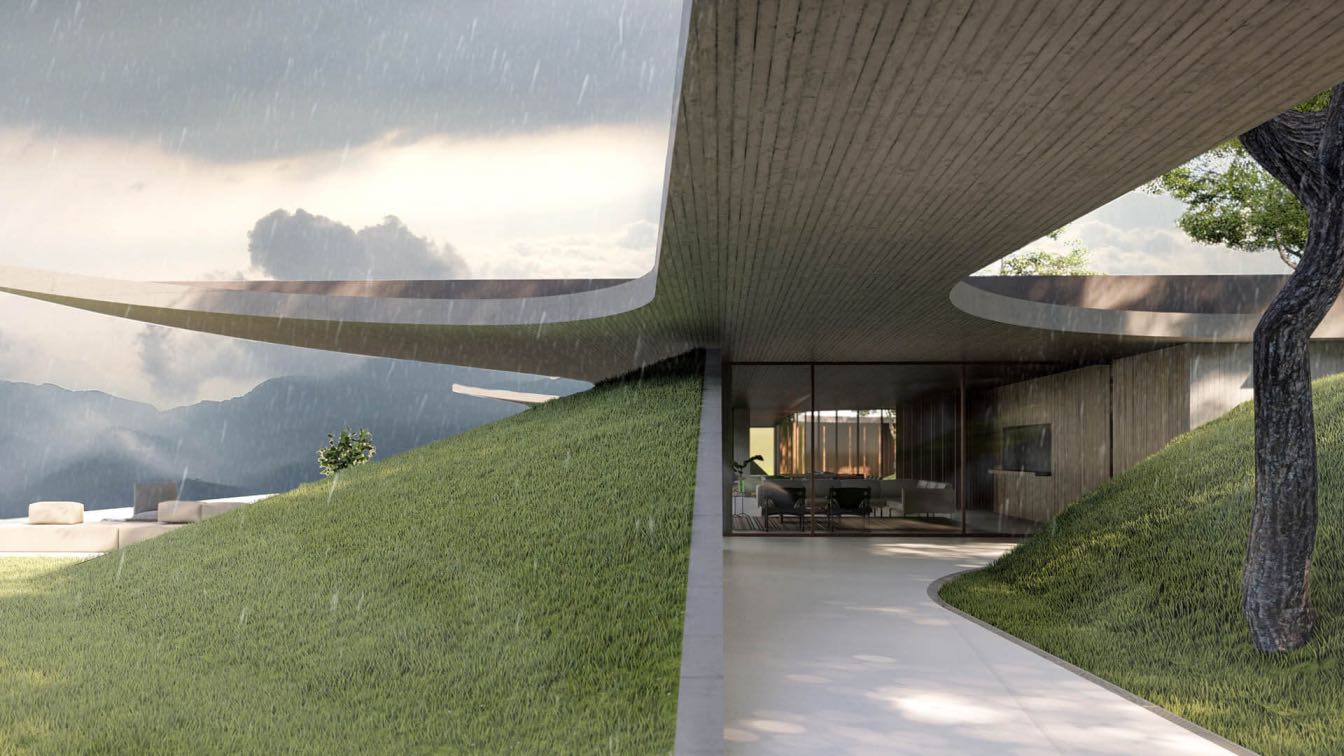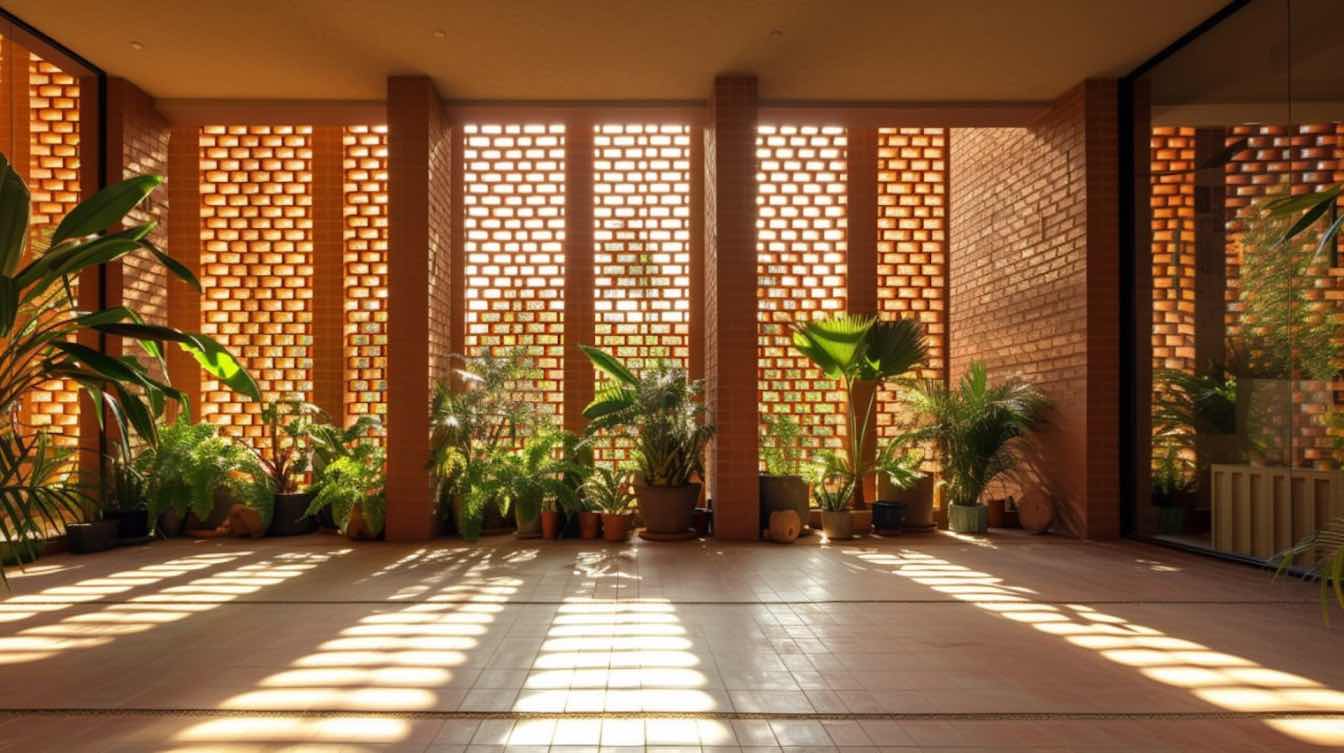Architect's statement: Co-existing with its unique topography, climate and splendid scenery, the Hyperloop Desert Campus Competition cherishes designers who are brave enough to take on the challenge to design an iconic campus in one of the most sublime and reminiscent places on earth: The Mojave Desert. Surrounded by reddish rocks and buffered in a palimpsest of mankind, to design a campus requires a series of redoubtable decisions in which the functions in the campus and these geomorphological conditions bring an indivisible combination. Almost the opposite of the layers of years found in the desert, Elon Musk’s Hyperloop project aims to take place in this particular scenery where the subject of the competition will be located. Being an on-going research and production project, Hyperloop aims to rewrite the means of transportation in ways that are energy, time, budget and ecologically friendly and sustainable.
 Visualization by Metrica Visuals
Visualization by Metrica Visuals
Concept: The reminiscence of indestructibility and resilience found in the land form and in the reasons why we need a new transportation system suggests an equally resilient design concept to be adapted into the campus design. Therefore embraced “resilience” concept is implemented on five subjects. Resilience as a term covers self-sufficiency and independence hence the site’s resources are subjected to independent, effective and sustainable usage. The solar gain enables the production of electrical energy from solar panels embedded on the site while rainwater collection and gray water recycling systems located in the cores distribute collected and recycled water into the building and irrigation system of courtyards to nurture local ecosystems.
 Visualization by Metrica Visuals
Visualization by Metrica Visuals
The loop form gives the opportunity to create wind corridors and help passive ventilation of the interior. Another layer of resilience is the inclusive property of the design. The loops and circulatory system of the campus is designed to maximize the experience for each user type even for one-time visitors to create an invisible platform of information sharing since resilient communities only survive when they share the knowledge. Redundant character of the design is created by adapting a multi-nodal pattern of loops and cores which allow safe failure and potentiality to learn from past mistakes. Integrated design system brings four types of buildings together each having unique features, functions and users to allow encounters and enrich the diversity feature. Flexibility in the design facilitates resilient growth and spatial management so that the building can function for many more years.
 Visualization by Metrica Visuals
Visualization by Metrica Visuals
Form and Program: The symbiosis between the rough landscape and the iconic technology, helps The Hyperloop Desert Campus find its form The building was designed to seamlessly rise from the desert ground of Nevada; evolving above ground around four main courtyards; elegantly stretching connected spaces of four main programmatic units and two symmetric public and private spheres. The four courtyards introduce water elements in the deserted landscape of Nevada; it attracts greenery and it is circumscribed by tall palm-trees - they represent four unique Oasis - which are the main drive of the Hyperloop Campus.
 Visualization by Metrica Visuals
Visualization by Metrica Visuals
The building’s design spirals up - inspired by the speed of traveling - large corridors loop around these Oasis, crossing and interchanging levels, resembling complex interchange high-ways in form and function. The same spatial concept extends to the interior design: the Campus conciliates the high-tech identity of the Hyperloop with the rustic feel of the natural space. The visitor and the worker are invited to travel in a journey of fluid continuous spaces, graduating from natural and digital feels, public and private spheres.
 Visualization by Metrica Visuals
Visualization by Metrica Visuals
 Visualization by Metrica Visuals
Visualization by Metrica Visuals
 Visualization by Metrica Visuals
Visualization by Metrica Visuals
 Visualization by Metrica Visuals
Visualization by Metrica Visuals
 Visualization by Metrica Visuals
Visualization by Metrica Visuals
 Visualization by Metrica Visuals
Visualization by Metrica Visuals
 Facade Section
Facade Section
 Facade Section
Facade Section
 Axonometric
Axonometric
 Diagram
Diagram
 Main Section
Main Section
 Plan
Plan
 Plan
Plan
 Plan
Plan
 Plan
Plan
 Plan
Plan
 Plan
Plan
 Logo
Logo
 Logo
Logo





